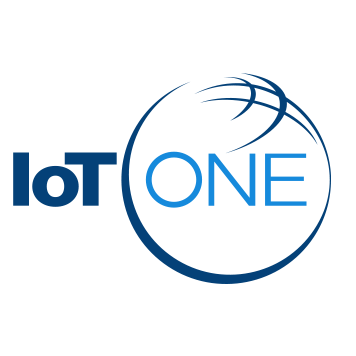F5
Your apps - fast, available and secure - in any cloud.
Overview
|
HQ Location
United States
|
Year Founded
1996
|
Company Type
Public
|
Revenue
$1-10b
|
|
Employees
1,001 - 10,000
|
Website
|
Stock Ticker
FFIV (NASDAQ)
|
Twitter Handle
|
Company Description
F5 (NASDAQ: FFIV) powers applications from development through their entire life cycle, across any multi-cloud environment, so our customers – enterprise businesses, service providers, governments, and consumer brands—can deliver differentiated, high-performing, and secure digital experiences.
IoT Snapshot
F5 is a provider of Industrial IoT infrastructure as a service (iaas), functional applications, application infrastructure and middleware, and robots technologies, and also active in the buildings, cities and municipalities, national security and defense, and transportation industries.
Technologies
Use Cases
Functional Areas
Industries
Services
Technology Stack
F5’s Technology Stack maps F5’s participation in the infrastructure as a service (iaas), functional applications, application infrastructure and middleware, and robots IoT Technology stack.
-
Devices Layer
-
Edge Layer
-
Cloud Layer
-
Application Layer
-
Supporting Technologies
Technological Capability:
None
Minor
Moderate
Strong

Supplier missing?
Start adding your own!
Register with your work email and create a new supplier profile for your business.
Case Studies.
Case Study
Education Solution Provider Helps Customers Do More with Less Using F5 Solutions
Hobsons, an education solution provider, delivers a suite of education-oriented Software as a Service (SaaS)-based applications to colleges and universities. These include web-based course and career planning, recruiting, enrollment, and retention tools. The company's application delivery infrastructure is mission-critical, and it has to manage significant increases in web traffic that coincide with student application and enrollment deadlines. Hobsons also has to support a range of users, including prospective students completing online applications and administrators needing access to the same systems for recruitment efforts and application reviews. The company needed a solution that could easily direct different types of traffic to different pools of servers and manage users’ authorization and access to various applications, without requiring modifications or adjustments on the customer's end.
Case Study
American Systems' Cloud-Based Emergency Notification System: A Case Study
American Systems, a government services contractor, was tasked with developing and deploying a cloud-based version of its emergency notification system for the United States Air Force (USAF). The legacy Emergency Mass Notification System (EMNS) was reliable and secure, but required hardware installations at individual major commands and military bases, supporting approximately 700,000 users. The USAF realized that migrating the EMNS solution to the cloud could significantly reduce licensing, hardware, and maintenance costs, and make the system easier to scale and manage. However, the new cloud-based solution had to meet the stringent requirements of the Defense Information Systems Agency’s Secure Cloud Computing Architecture (SCCA). American Systems lacked the internal expertise to meet these requirements and needed a partner to help them tackle the SCCA requirements.
Case Study
Consulting Firm Avoids Significant Infrastructure Costs, Improves Application Availability
A.T. Kearney, a global management consulting firm, heavily relies on unified communication services such as email, instant messaging, VoIP, and others. With a significant portion of its workforce operating remotely, the company needed to ensure the security and availability of these tools from any location and on any device. The firm's existing load balancing solution was not flexible enough to support an active/active data center model, limiting them to an active/passive one. This meant they couldn't load balance traffic between their two data centers, resulting in the secondary data center being primarily a disaster recovery site that sat dormant most of the time. This was seen as a waste of costly, high-end resources. Additionally, downtime was an issue as the secondary data center had to be down to migrate and bring up applications there. To serve its growing number of users worldwide, the company was considering serving applications from regional or branch locations, which would have required building additional data centers or deploying application servers in each branch office.
Case Study
Auckland Transport Enhances Public Transportation Experience with F5 Solutions
Auckland Transport (AT) is responsible for the region’s transportation services, including buses, trains, ferries, roads, and related facilities. With public transport trips expected to double from 70 million per year in 2012 to 140 million by 2022, AT needed a modern transportation system that could seamlessly connect people, devices, and systems, offer enhanced safety, improve commuters’ travel experience, and reduce operational costs. AT also wanted to address the fast-changing consumer landscape, where commuters and citizens expect dramatically improved levels of service, usability of customer-facing platforms, accelerated response from organizations, and high availability of information related to traffic and transportation schedules. To achieve this, AT had to improve the integration of its transportation network using an integrated single-system approach while moving away from its legacy information technology systems to a cloud-based environment. The constantly evolving technology also changed the nature of the transportation business, with AT amassing large amounts of customer data, especially through their mobile applications: AT Mobile and AT Park. This meant that AT had to abide by regulatory frameworks, particularly the General Data Protection Regulation (GDPR). Finally, AT also recognized the need to protect its systems from increasingly sophisticated and dangerous cyber-attacks that have the potential to disrupt its transportation network.
Case Study
Bangladesh Post Office's Digital Transformation with F5 for Secure Mobile E-Wallet App
The Bangladesh Post Office, a public sector enterprise, was determined to support the ‘Digital Bangladesh’ initiative by launching a digital wallet for instant money transfer. The wallet was expected to cater to a wide audience, including individuals without bank accounts. The challenge was to develop a highly robust, feature-rich, and easy-to-use application that enables secure money transfers. The app was a late entrant to the space, competing against established e-wallet applications in Bangladesh, which meant it had to be designed and function seamlessly. The requirements of the application included 24/7 availability and high-level security. The Post Office needed a tool that could reroute incoming requests from Telecom operators to their app servers, improving the app usage experience. Given the financial applications of the tool, safeguarding the application was vital, requiring protection against application layer attacks, Denial of Service (DoS) attacks, Bot traffic, and data breaches to steal user credentials.
Case Study
Human Kinetics Boosts Website Performance, Security, and Innovation with F5 Solution
Human Kinetics (HK), a publisher of kinesiology-related materials, was facing significant challenges with its third-party network solution. The system had become unstable, inflexible, and difficult to support, leading to significant downtime. The solution was also impairing performance, which led to customer complaints and lost revenue. HK's previous solution could not track users' IP addresses, which was crucial for applying the correct currency to a user's order. This led to a flood of customer complaints as orders couldn't be processed without the correct currency information. The updates from the third-party vendor caused high latency and system instability, leading to frequent crashes and up to four hours of downtime per week.
Case Study
Okta + F5 Networks = Greater scale, reliability for Pitney Bowes’ global e-commerce platform
Pitney Bowes, a global technology company, launched a complete e-commerce solution in 2016 that streamlined everything from international payments to sales promotions. The Pitney Bowes Commerce Cloud offers a suite of global e-commerce capabilities delivered to customers and partners via mobile and the web. However, to further scale and secure customer access to Commerce Cloud, Pitney Bowes needed to find a solution. They conducted an extended search, evaluating over 15 identity service providers for a strong set of APIs to provide partners with secure access to services, flexible and scalable sign-on and provisioning options for desktop and mobile users, compatibility with modern protocols such as SAML and OAuth, and high availability and reliability.
Case Study
Global Mobile Service Providers Optimize Performance of IP Services with F5 Solution
Mobile service providers face an enormous challenge from the exponential growth in the data, video, and voice over IP (VoIP) traffic being consumed by users with smartphones, tablets, netbooks, and laptops. As data rates increase with each successive generation of IP-based services —from 2G and 3G, and ultimately to 4G— this challenge will only worsen. Fierce competition limits how much service providers can charge for these services, and maintaining satisfactory performance levels for the growing number of users and applications threatens to force some major and costly upgrades throughout service providers’ infrastructures. Furthermore, service providers want to offer a wide variety of plans to subscribers that range from basic to unlimited access, potentially with tiered performance levels. Subscriber plans that charge based on actual usage require detailed accounting, and unlimited plans often lead to excessive utilization that can degrade overall performance and limit the scalability of the existing network infrastructure.
Case Study
Illinois School Districts Get Affordable Cloud Services, Cut Storage Costs with BIG-IP Products and ARX
IlliniCloud, a non-profit cooperative that hosts applications for school administration, facilities management, student performance tracking, multimedia, and library management for K–12 school districts throughout Illinois, was facing a challenge. The organization needed to optimize the delivery of these services through its private cloud and help member districts manage annual data growth of up to 300 percent. The districts were struggling with providing their own IT services, with budgets varying widely from district to district, leading to inefficiencies and duplicate efforts. Managing data was one of the biggest challenges districts faced; many were hardpressed to provide adequate storage capacity, and they needed better tools for managing, disseminating, and archiving data. Nearly 95 percent of school districts lacked disaster recovery (DR) plans, so applications and data were potentially at risk.
Case Study
University of Groningen Ensures Continuity for Critical Applications Using F5 Solutions
The University of Groningen was facing issues with its IT infrastructure, which was causing downtime for users and inefficient utilization of server capacity. The workload on the university’s servers had grown dramatically as the number of people accessing the IT infrastructure increased. In addition to staff members and students, the university had opened up the network for alumni to access and use certain academic facilities. The variety of devices connecting to the infrastructure had also increased as mobile devices and laptops became more prevalent. These factors combined to further add to the server load.
Case Study
PersonalizationMall.com Ensures Fast, Reliable Remote Access with BIG‑IP Edge Gateway
PersonalizationMall.com, an online retailer, was facing challenges with its existing VPN solution. As more employees required remote access, the Cisco technology they were using no longer delivered acceptable performance. This was especially evident after the company migrated to Windows 7. Mobile users needed the 64‑bit operating system but were unable to connect to the VPN. Another concern was the slow connection speed between office and home, which was limited by the older VPN technology. Users were also experiencing difficulties with dropped calls on VoIP, which was frustrating and negatively affected the business.







